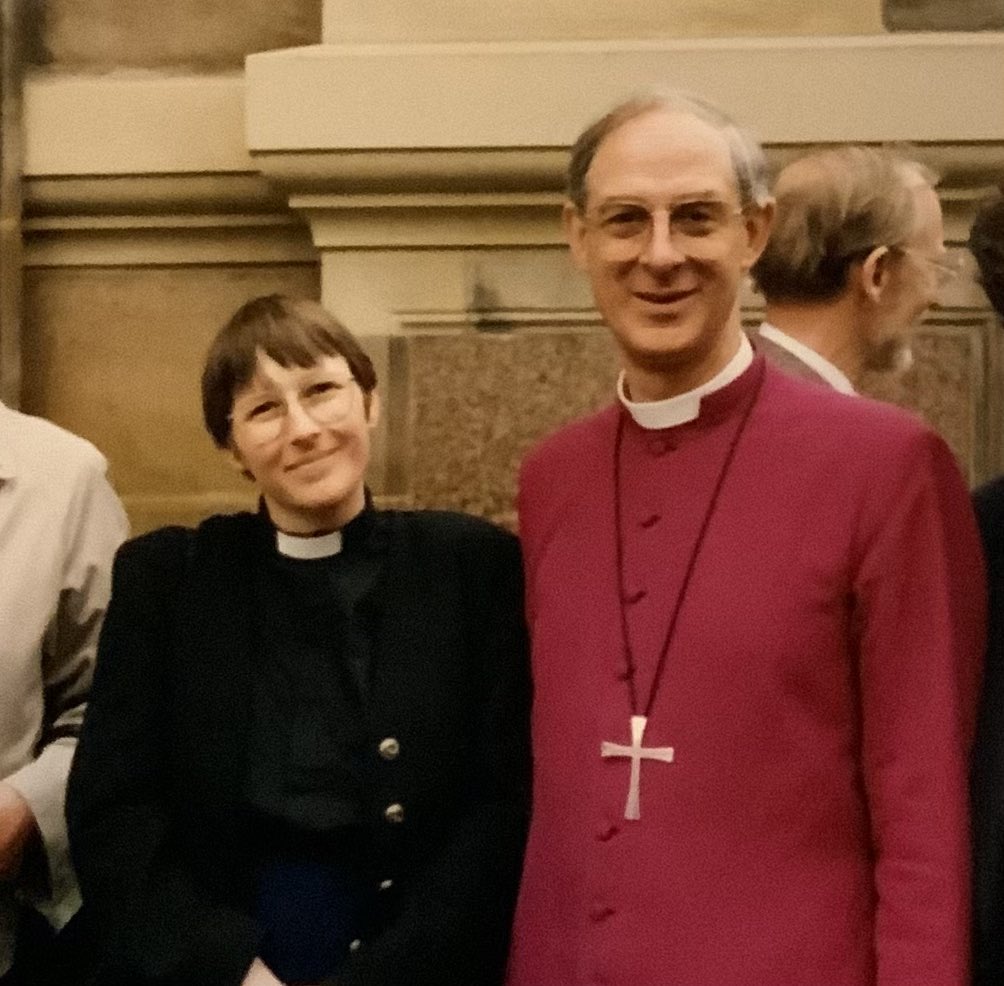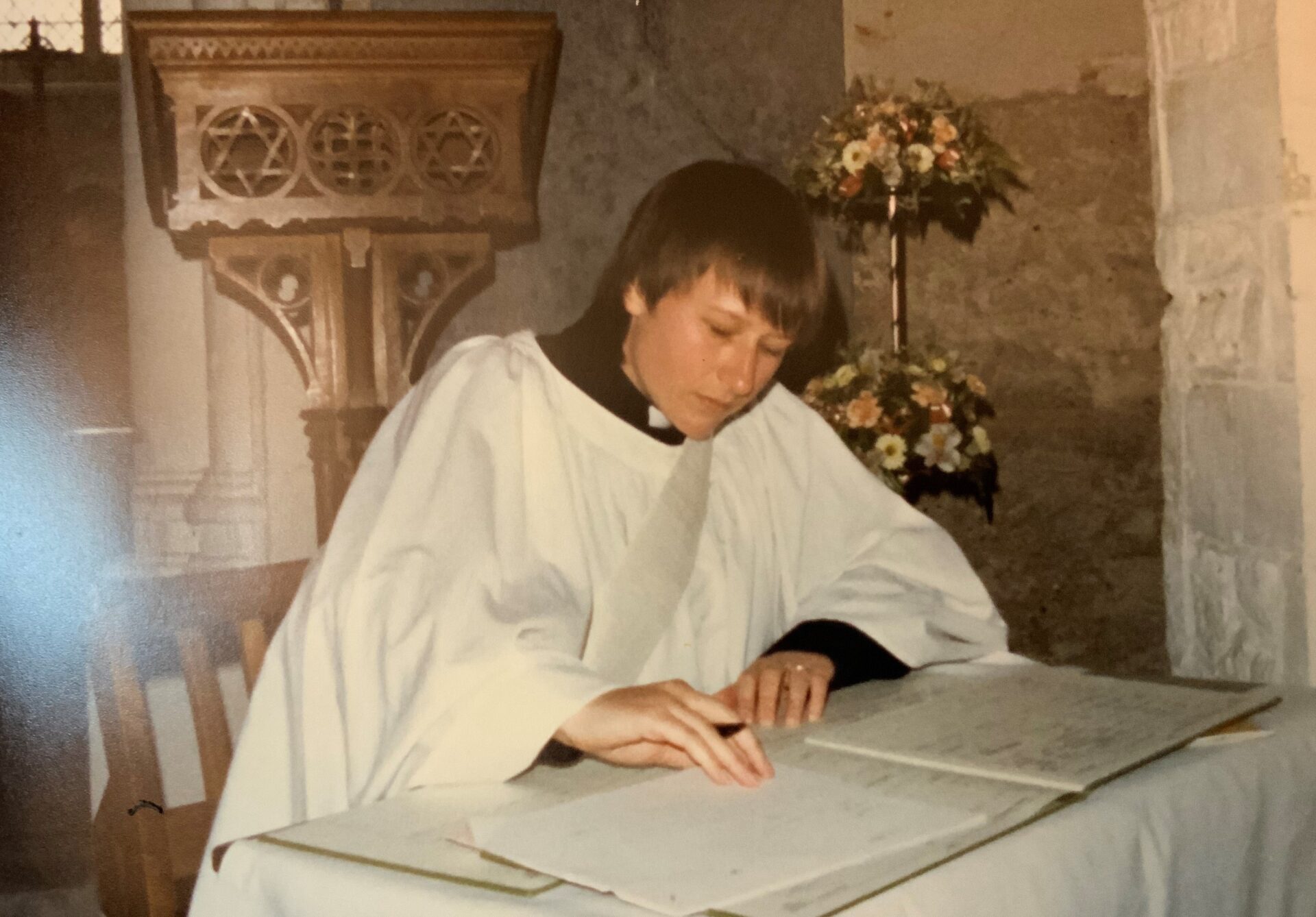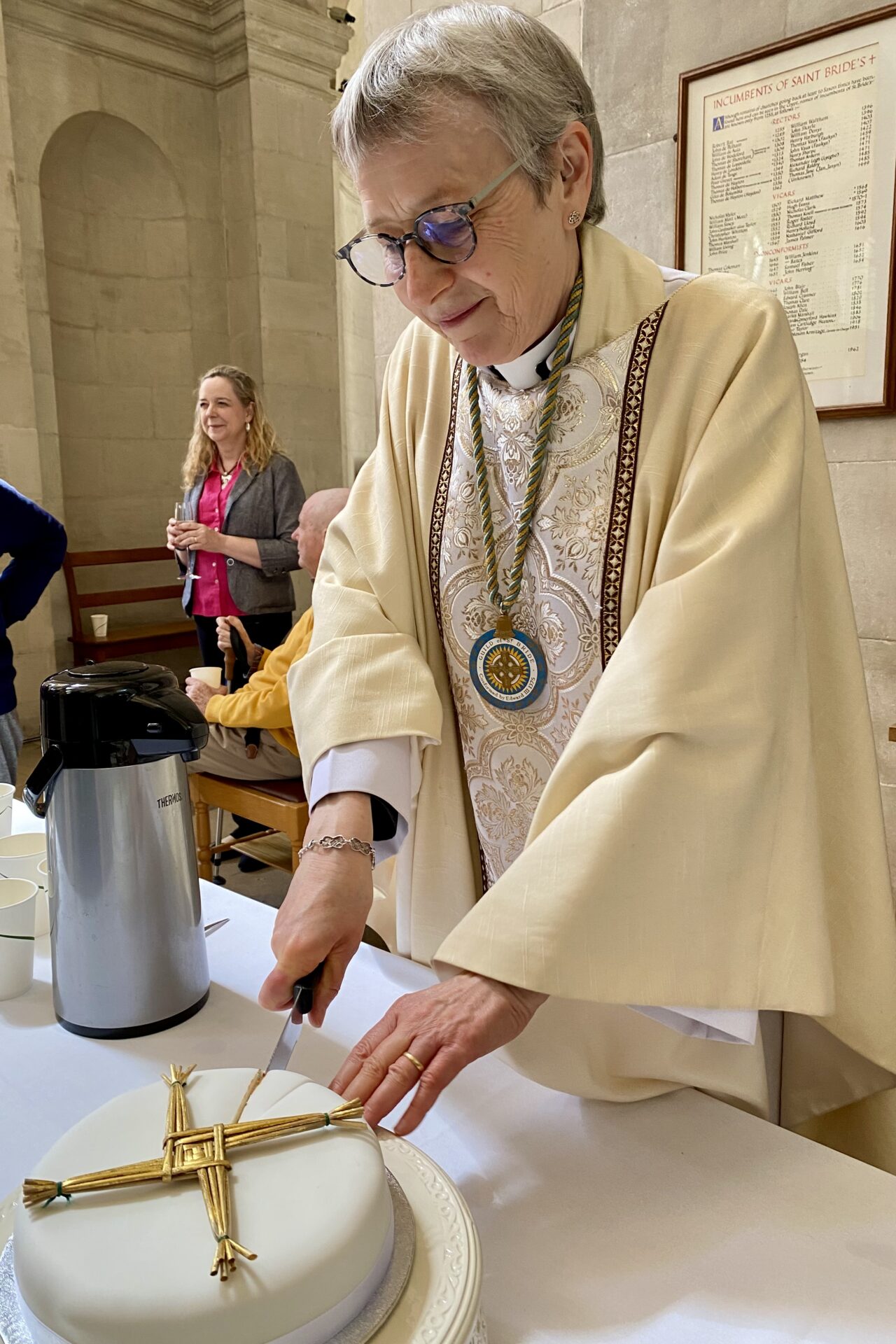NEWS

Thirty years and counting
Earlier this month we celebrated the 30th anniversary of the Rector’s ordination to the priesthood. There were bubbles and cake to celebrate – of course – the latter decorated with a Brigid Cross in honour of the patron of Alison’s current church, St Bride.
We took the opportunity to catch-up with Alison and ask a few questions about her journey to priesthood and the years since she became a priest in Birmingham on 21st May 1994, some thirty years ago.
Q: Let’s begin at the start of your journey. How did your journey towards ordained ministry begin?
A: In 1985, at the age of 26, and before women could be ordained, I was selected to train as a deaconess – which is a lay ministry. The regulations changed during my time at theological college, and from 1987 onwards, women could be ordained as deacons (but not yet priests). My own ordination to the diaconate was in 1988.
Q: The path to priesthood was not immediate for women. Can you share the challenges of remaining a deacon for several years?
A: For the men who were ordained with us, their ‘diaconal year’ was followed twelve months later by their ordination to the priesthood. However, women were not admitted to the priesthood until 1994, so many of us had to remain deacons for several years. This was quite challenging: as deacons, we were unable to preside at the Eucharist, or pronounce a blessing or absolution – and most senior Church posts required someone in priest’s orders. So there were significant constraints on what we could do, which mean that 1994 was an immensely significant year for us all.
Q: You served in rural Oxfordshire before moving to Birmingham. How did your role evolve over time?
A: After I was ordained as Parish Deacon, I served in two rural parishes in south Oxfordshire: St Mary’s, Chalgrove and St Helen’s, Berrick Salome. I was there for two years before our family relocated to Birmingham, where I was appointed to the staff of Queen’s College (now The Queen’s Foundation), which trains candidates for the ministries of the Anglican, Methodist, and United Reformed Churches. I taught Christian Ethics and New Testament Studies – plus anything else that needed covering! – lecturing full time.

Q: And the path to priesthood?
A: In 1992 General Synod made the historic decision to allow women’s ordination and in the March two years later, the first women were priested at a service in Bristol Cathedral. Later that year, it was Birmingham’s turn and I was priested on 21st May.
Q: So the long wait was finally over. Obviously your path eventually brought you to St Bride’s, but what filled the intervening years?
A: In 1996, I left full time lecturing, and went back to parish ministry, serving at St Anne’s Church, Moseley for eight years. From there I was appointed to the staff of Birmingham Cathedral as interim Canon Liturgist, before taking over as the incumbent of Edgbaston Old Church in 2005. I was there for nine wonderful years before moving to back to London, the city of my birth, and the immense privilege of being appointed Rector of St Bride’s.
Q: And the highs and lows, what stands out?
A: The highs are all to do with people: it is an enormous responsibility, but also an incredible privilege to be entrusted with the handling of their most precious life experiences – the joyful and the tragic. The lows? Fortunately I haven’t really had too many of them, and I am fairly resilient! I have had some incredibly tough situations to deal with over the years, but I have always been blessed with wonderful structures of support during those difficult times.
Q: Any sage advice for navigating life’s difficulties?
A: Sleep. Any situation can feel overwhelming if you are tired!

Posted On: Wednesday 26th June, 2024
READ OR LISTEN TO OTHER SERVICES

STAY UP TO DATE
WITH NEWS FROM ST BRIDE’S
Subscribe to our newsletter to receive alerts for
events and advance information about seasonal services.
We protect your data and never overwhelm your inbox.
SUBSCRIBE